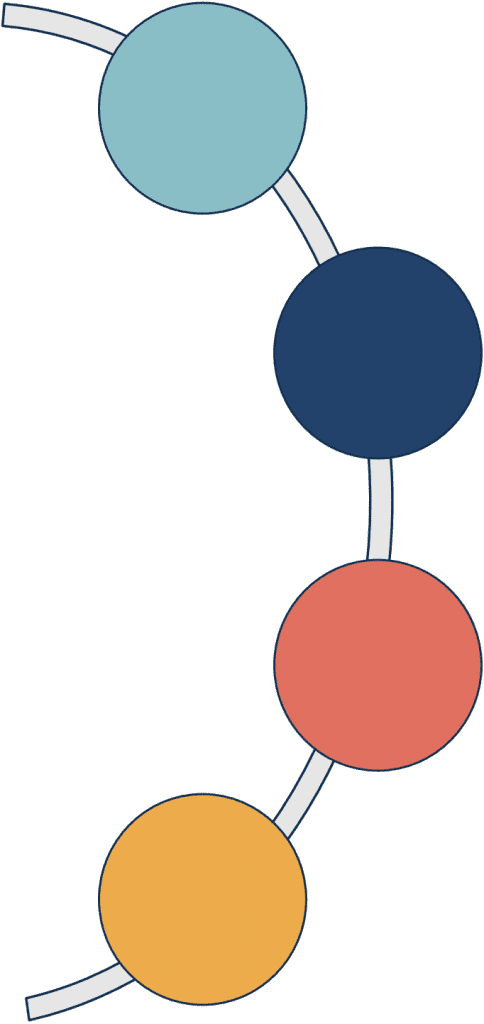Results
An Integrated Campaign of Mono Oral Polio Vaccine Type 2 (mOPV2) and Vitamin A Supplementation
An integrated campaign that addressed an outbreak of vaccine-derived poliovirus type 2 and improved vitamin A supplementation delivery during COVID-19
Results
Planning phase outcomes
An inter-sectoral planning and coordination committee, chaired by the Director of Public Health of the Ghana Health Service, was responsible for campaign planning and coordination, implementation, and resource mobilization at the national level. The committee comprised representatives from the government, partners, donors, and civil society organizations. It supervised regional committees and provided oversight to activities of five national subcommittees (Communications and Social Mobilization, Training, Vaccines and Logistics, M&E, and Safety Monitoring.)
All participants received 1-2 days of training for their respective roles (i.e., regional/district/subdistrict health teams, health partners, vaccine accountability monitors, independent monitors and quality assurance survey team, volunteers, and vaccinators.) Preparedness status was assessed prior to campaigns at the national, regional, and district levels.
The strengths of the collaborative planning process on the overall success of integration were:
- Unity of purpose across every stakeholder group, established in the pre-planning phase.
- Resource mobilization, enhanced through the joint and aligned efforts of different donors and partners through all phases of the campaign.
- Active partner involvement in the management of vaccine and vaccine accountability.
Implementation phase outcomes
Approximately 4.67 million children aged 0-59 months (reported 102.3% coverage) received mOPV2 (over 100% coverage is attributed to population movement across regions and districts). 3.65 million children aged 6-59 months received vitamin A supplementation (88.8%); this was attributed to challenges in confirming children’s eligibility based on prior receipt of vitamin A. Health providers had to confirm eligibility based on available child welfare records or use their discretion in administration.
About 88% of caregivers were aware of the campaign, often through the community information centers (CIC) was the common source of awareness in many regions. CICs are shared information and communication facilities usually found in rural and isolated areas; community announcements or notices are usually transmitted via these facilities. However, there were variations in where communities received information across localities.
Monitoring and supervision
Independent monitors randomly assessed households and compared the number of targeted children against those with an indelible ink mark on a finger. A total of 10,236 (95.3%) children showed evidence of having received mOPV2, while 504 children had been missed. Reasons for non-vaccination included the child being absent from the home during the campaign (32.3%), house not visited (28%); vaccinated but no fingermark as evidence of vaccination (20.8%); refusal/noncompliance (4.2%).
The national Emergency Operations Center (EOC) facilitated identification and response to threats and enabled daily campaign monitoring. The EOC prepared daily situational reports based on daily review meetings, field reports, and real-time analysis of data from the ODK App utilized by household monitors.
Key Findings

- Intersectoral planning committee and subcommittees established
- Unity of purpose, resource mobilization, and active partner involvement facilitated collaborative planning
- Trainings conducted for all roles involved in implementation
- Preparedness to campaign implementation assessed at all levels
- mOPV2 coverage was very high, vitamin A supplementation was lower due to eligibility and records
- Daily monitoring and situation reports from EOC enabled timely response to challenges
Challenges
Challenges Faced
- The late-stage decision to integrate campaigns affected information, education, and communication (IEC) efforts and logistics
- Pre-campaign messages did not include vitamin A, therefore mOPV messages overshadowed vitamin A.
- Misperception amongst communities that COVID-19 vaccine was included in the campaign, which resulted in some refusals
- Some areas experienced sporadic shortages of vitamin A supplements, or did not have the additional supplies needed (e.g., scissors)
- Heavy rainfall disrupted the campaign in many districts
- Security issues in one district that necessitated security escorts and an additional regional team
- Delay in disbursement of funds to some districts affected training and social mobilization
- Low administrative coverage of vitamin A (88.8%) due to challenges in confirming children’s eligibility by age
- Children were missed in some areas because they were absent, asleep, refused, or no vaccination team visited the area
Mitigation
- Intensified social mobilization and communication with key community leaders to address fears that the integrated campaign included COVID-19 vaccine
- Daily data monitoring via the EOC enabled real-time identification and timely solutions
- A regional team provided security escort and an additional regional team to support one district experiencing insecurity, a result of notification via the EOC
- Supervisors redistributed vitamin A supplements and provided additional supplies as needed
